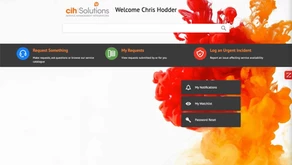It’s been an exciting time here at CIHS. We’re typically not in the habit of writing articles about what we do and how we operate. However, given the growth we’ve experienced and the new challenges we’re now facing, we felt it was time to explain some of the changes we’ve made and will be rolling out over the next couple of months. For those familiar with our previous posts, we’ve often discussed how to leverage existing toolsets, not change products for the latest kid on the block, or ensure that you are getting the best out of your tool. Well, we’re changing our toolsets, and we thought it might be of use to share our journey in this decision. What do we currently use? We use a range of tools to deliver our support solutions. However, day to day, we mostly interact with the Atlassian suite of toolsets, specifically the Jira Software, Jira Service Management and Confluence tools, along with a range of plug-ins. What’s wrong with these? Well, individually nothing, we’ve utilised these tools for some time. We deliver all our development projects through the Jira Software tool and have loved the flexibility and speed of creating tickets. The integration with the Confluence toolset provides a slick end-to-end development lifecycle, starting with the scoping phase through to promotion into production. We also utilise Jira Service Management to handle all of our Virtual Admin agreements. Our customers can log Incidents, Service Requests and even development requests via our self-service portal or integration with their ITSM toolset. Based on feedback to date, they’re delighted with the experience it offers. So why change? You might be wondering why we’re even considering changing toolsets if our customers are happy with their current experience. That’s a good question, which is why the main focus of our toolset selection phase was to ensure we were providing our customers with an equal or better experience. Once we were happy the tool could offer that same value, we had to ensure it could address our reason for the change. A change to our business model was our initial trigger.
Historically we have always been a professional services company that offered virtual administration. Whilst we still do offer those services, we now also provide a complete managed service offering and hosting services. Including a managed service offering means we are now required to use our tool to handle a few key requirements which are pivotal to our business, the top 5 being:
- Contracts – The ability to store contracts in a central location was a big driver for us. As I’m sure it is for a lot of you reading this.
- Time Recording/Token Usage – Whist we had a tool for time recording already, shifting this over to our new ITSM tool was a major benefit for us, not only was it a cost-saving due to no longer requiring the original tool, but it increased productivity due to everything being in 1 system. Token usage is a new concept for us introduced with the managed service offering. This functionality was not available in Jira even with extensive configuration.
- CMDB – I don’t need to go into too much detail with this one. By offering hosting services it’s vital we have control over our infrastructure.
- Kia Integration – Whilst this is available with Jira, due to the additional functionality and flexibility our new toolset offers. We could leverage Kia a lot more. And as we’ve had such great feedback from companies using Kia, we thought we’d be silly to not put it as a primary focus for us!
- Self-Service – The Jira portal has always served us well. However, we wanted a tool that we could enhance beyond an out of the box configuration and step-up our customer’s overall experience when logging tickets with us.
Now as mentioned, a lot of the above could have been done using the Atlassian suite. However, based on our experience, the effort involved to configure Jira would have been significantly higher than switching toolsets, and we still wouldn’t have all of our requirements covered unless we start including add-on packages, which can hike the cost of your monthly subscription! What is our new toolset? So with this in mind, what toolset have we finally chosen to implement? As we’re currently a partner with multiple vendors, we had a solid selection pool, so the choice wasn’t easy by any means. But after weeks of consideration, we finally decided that 4me would be our tool of choice. We love the balance between the flexibility available and the core functionality and structure the system offers out of the box.
The overall package for the price point 4me has was a perfect fit for the position we find ourselves in currently, and we believe 4me will enable us to expand our services in the future with minimal effort. The one thing we are keeping from our existing tools is Confluence! We use Confluence for our knowledge base and to provide a range of additional documentation to our customers. We may look at moving this to 4me in the future, but for now, Confluence, along with the Export PDF plug-in, does a brilliant job. And the feedback we’ve received means we won’t be in a rush to move away! • If you’re considering a new toolset, struggling with your existing toolset, or you have any other service management queries, book a free chat with us now.



